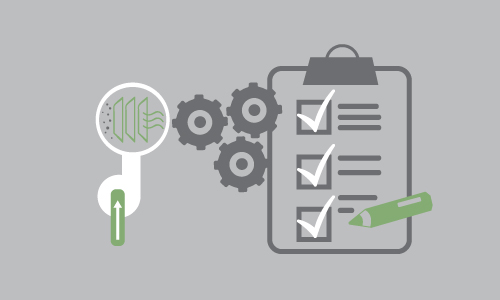Thermal and Catalytic Oxidizers are expensive pieces of equipment both initially and over the course of their decades-long useful life. While expensive to install and operate, they play a vital role in your compliance efforts. For these two reasons alone, it pays to keep these pollution control solutions not only operational, but efficient as well. Therefore, keeping your air pollution control solution well maintained is critical to reduce costs, maintain compliance, and ultimately keep your operations running.
Dangers of Unplanned Downtime: Costly Repairs, Potential Penalties
When air pollution control systems such as thermal or catalytic oxidizers shut down unexpectedly, the entire maintenance team goes into scramble mode—trying to find parts, make repairs, and get the equipment up and running. Few things cost more than an emergency repair. From the downtime itself to the high cost of calling an emergency technician to the event that you may need parts or components rushed to your facility, equipment failure is expensive and reactive maintenance provides much less value than proactive or preventive maintenance.
Added to this, continuing to operate when your pollution control equipment has failed exposes you to compliance risk including fines and penalties that cost more than emergency maintenance.
Ultimately, proactive maintenance will help you take control of an otherwise chaotic process—shutting down machinery when it is needed least so that it is reliable when it matters most. Today, we will explore the basics of scheduling maintenance and making repairs so that you can operate with 100% reliability when demand is high.
Maintenance Checklist
Whether you’ve implemented a new piece of equipment or are trying to extend the useful life of your current solution, a detailed maintenance plan and schedule can prevent or minimize the effects of downtime. As a leading provider of air pollution control equipment, The CMM Group can develop a detailed maintenance plan for your unique needs, as well as provide parts and service for your oxidizer.
A good maintenance program consists of the following components and all maintenance activities should be logged in case an EPA inspector comes knocking.
Spare Parts and Component Replacement Plans
The first part of any good maintenance plan is knowing how you will replace a damaged part or piece of equipment. This starts by developing an inventory of the parts you already have, ordering parts you may need, and knowing where you can get large assets quickly and with minimal downtime.
Routine Inspection and Maintenance
While you can never skip annual or semiannual inspections, an often-overlooked practice in air pollution control system maintenance consists of developing a routine monthly inspection schedule. Often able to be completed during scheduled downtime at a facility, monthly inspections allow maintenance technicians and plant managers to see what is wrong and what could go wrong, taking steps to make repairs when such repairs would cause the least damage to the bottom line.
In addition to the inspections, technicians should perform monthly maintenance on the oxidizer. During monthly maintenance, technicians should lubricate parts, make minor repairs, replace worn components, and tune the system, documenting air flow and making adjustments as necessary.
Semi-Annual and Annual Inspections and Maintenance
While monthly inspections and maintenance can prevent unexpected downtime, semiannual and annual inspections are the key to keeping the system at peak performance. These should be scheduled for periods of low demand (holidays) and require rigorous inspection of the entire system including adjustments to the combustion system, replacement of the ceramic media, and other major repairs that keep an oxidizer running at the promised thermal and destruction efficiencies.
A Well-Documented Maintenance Log
If you have an air pollution control system, most state implementation plans require a well-documented maintenance log with recordkeeping on outputs and efficiency. Often overlooked by manufacturers, failure to maintain a log could be an easy way for an EPA inspector to assess a noncompliance penalty—even if your pollution control system has been operating properly.
The CMM Group: Consulting and Service
We understand how complex and challenging it is to maintain compliance, and while we stand behind the reliability of our products, we also know that proper maintenance and service is necessary to keep your pollution control system running smoothly.
From preventive maintenance to emergency service, we can design a service plan for most equipment makes and models, along with troubleshooting, maintenance, installation, repair and rebuild evaluations via expert technicians and CMM professional engineers. Learn more about how we work and contact us for more information.




